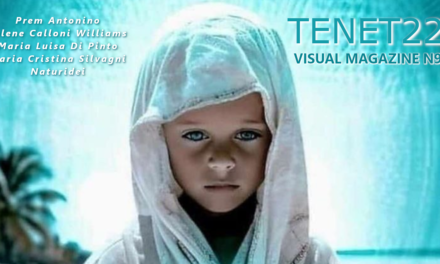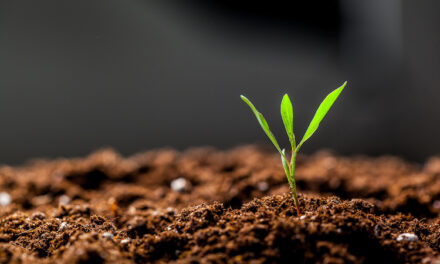Material objects or conscious spirits?
In our hyper-rational and materialistic culture individuals have no doubts in perceiving Earth, Water, Fire, Air as substantial objects. Their senses, however, are mental operations. When they see, feel, smell, taste and hear, it is their mind that chooses, among an infinite number of possibilities, what to perceive and how to perceive it. In the end, individuals commonly find themselves living in a sort of mental map of reality, and it is in this map that reality appears objective and substantial to them.
In Buddhism, Earth, Water, Fire and Air are seen as emotional experiences.
In particular:
- Earth is the emotion of softness and hardness or heaviness and lightness,
- Water is the experience of humidity and dryness,
- Fire is the emotion of heat and cooling,
- Air is the experience of movement and immobility.
The sensation of objectivity is consequent to the fact that man wants power, control over reality. You cannot have control over an emotion, but a material object, on the other hand, is measurable, predictable and governable.

We live in a symbolic world, which is an imaginal world, where everything is a dream, image, spirit. Matter and spirit are two aspects of the same reality, distinct but not separate.
Confusing the imaginal earth with the objective and substantial earth is the underlying principle of violence.
Let’s consider the terrible, unbearable violence that is taking place right now in the armed conflict between Israel and Palestine. At the origin there is the territory. The “promised land” of the Jews was a symbol, but it was confused with the objective and material land, hence the conflict, hence the violence.
How many men, throughout history, have died throughout the world due to wars waged for territory? A territory that does not exist, except in man’s mental map.
In the spiritual traditions of populations, however, reality is understood as emptiness. Not only in Nagarjuna’s Buddhism, where the concept of “sunyata”, the “emptiness” as the real substance of all things, is central, even in Hinduism the forms of existence are seen as impermanent. The Sinhalese art historian Ananda Coomaraswamy, who lived between the 19th and 20th centuries, describes the primordial sound in poetic tones in his book “The Dance of Shiva”:
“In the night of Brahman, Nature is inert and cannot dance until Shiva wants it: He awakens from His ecstasy and, dancing, sends pulsating waves of a sound through the inert matter that causes awakening: even the lower matter dances , appearing like a halo around Him. By dancing, He supports His multiple phenomena. In the fullness of time, still dancing, He destroys all forms and names with fire and grants new rest. This is poetry, but it is also science.”
It would seem that the most ancient esoteric traditions share with the most modern science the model of a pulsating holographic universe, which – like lightning – appears and vanishes, it does not last.
Even the esoteric Christian tradition, while holding the experience in the flesh as a fixed point, understood as an expression of the sacrum facere, never affirms the objectivity of things, on the contrary, the dimension of the Spirit is inseparable from the material one.
In our hyper-rational and materialistic culture individuals have no doubts in perceiving Earth, Water, Fire, Air as substantial objects. Their senses, however, are mental operations. When they see, feel, smell, taste and hear, it is their mind that chooses, among an infinite number of possibilities, what to perceive and how to perceive it. In the end, individuals commonly find themselves living in a sort of mental map of reality, and it is in this map that reality appears objective and substantial to them.
Not only the elements are spirits, they are sentient, intelligent spirits. In the anthroposophical tradition they are associated with elemental spirits: Gnomes (the intelligences of Earth), Undines (the intelligences of Water), Salamanders (the intelligences of Fire), Elves (the intelligences of Air).

In all animist traditions the elements are seen as spirits or gods and goddesses. Even in the polytheistic religion of ancient Greece, Earth was represented by the goddess Gaea, Water by Poseidon, Fire by Hephaestus, Air by Aeolus and there was also Ether, the quintessence or fifth element which, according to Aristotle, did add to the other four already known. For alchemists, Aether is the main compound of the philosopher’s stone.
In the Yogic tradition the elements are associated with the chakras and have their own Yantra, or symbol.
Earth is the element of the first chakra and its Yantra is the square.
Water is the element of the second chakra and its symbol is the crescent moon.
Fire is the element of the third chakra and its symbol is the triangle with its vertex facing downwards.
Air is the element of the fourth chakra and its Yantra is the six-pointed star.
Aether is the element of the fifth chakra and is represented by the disk of the full moon.
As if to say that each element corresponds to capacities and forms. The chakras, in fact, are the “wheels”, where the vital energy (“kundalini”) manifests itself in actions.

The first chakra is located in the perineum area, here kundalini is the survival instinct and the warrior ability. The primitive and warrior spirit resides in the first chakra.
The second chakra is in the area of the genital organs and here kundalini manifests itself as sexual energy and emotion. In the second chakra reside the animal spirit (what Jung called the “double animal”) and the spirit of the child. All the emotions we experienced as children have not been lost, they inhabit the area of the second chakra, a soft area of the body, which does not have a protective bone cage.
The third chakra is in the navel area and here kundalini becomes willpower. Here resides the spirit of the magician. Indeed, what is magic if not the art of making change in accordance with the will?
The fourth chakra is in the center of the chest, at the height of the heart and here kundalini expresses itself as the ability to love, to create and as the power of knowledge. In fact, three “psychic characters” live in the fourth chakra: the romantic spirit, which intervenes in the processes of falling in love, the genius, the spirit of creativity, and the inner master, who according to the Vedas lives very deep in the heart chakra, it is as big as the thumb of a hand and it is a laughing child.
The fifth chakra is in the throat and here kundalini expresses itself as a power of communication. It is said that in the fifth chakra there is the spirit of the dragon, which represents the power of assertiveness. Being assertive means saying what you have to without blurting out and without holding back, just like the dragon. The power to communicate assertively is compared to the dragon’s ability to spit its fire with measure, without blurting out and without holding back, so as not to implode.
It would seem that the most ancient esoteric traditions share with the most modern science the model of a pulsating holographic universe, which – like lightning – appears and vanishes, it does not last.
In Esoteric Yoga, a ritual is known in which the elemental spirits are evoked by associating them with the chakras.

By acting on the first chakra with controlled contractions and breathing, the spirit of the earth is evoked, which is the keeper of the secret of prosperity. Here is the evocative formula and the corresponding mantra:
Old men of the earth, grant me your precious vibrations so that the solid power of the rock – the power of wealth – can accompany my days in the service of the soul of the world.
The mantra for evocation is LAM KRAM LAM
By acting on the second chakra, the spirit of water is evoked, which is the secret guardian of the original purity of everything. Here is the evocative formula and mantra:
Water women allow me to recognize the purity of everything that has happened. As I swim in the lake of the original purity of everything, may the fishermen’s net not be my enemy, nor self-expiation, nor self-limitation capture my dreams and may my future shine free from the residues of the past. VAM KRAM VAM.
The spirit of Fire is evoked through an action of contractions and breathing in the abdominal area, the area of the third chakra. The evocative formula of the fire element is the following:
Master (turning to the Fire) burn my karmic residues and help me make a firm resolution. It is said: everything is the result of resolution. May my will rise like the flame that always points towards the sky. RAM KRAM RAM.
By acting on the fourth chakra, Aditi, the spirit of the air, is invoked with this formula:
Aditi, you who are sky, you who are air, you who are never real, never unreal, I dance with you on the wings of perfect creativity, I cultivate with you the game of pure pleasure and, remaining in the natural state, I fall in love and love without ear, relying on my inner teacher I frequent forests and remote places where I can enter into my greatness. YAM KRAM YAM.
Finally, acting on the fifth chakra we invoke the spirit of the Ether with the following formula:
May I become earth
May I become sky
May I become the mountain
May I become the sea
May I grow, widening and lengthening my body
Until I am dispersed in the infinite aether.
HAM KRAM HAM
The ritual is usually concluded with nine repetitions of the AUM mantra.
This ritual, like others linked to the elements, makes us understand how in the spiritual traditions of people, and not only, the elements have always been considered as spirits or gods, not as material objects. Being immersed in materialism has taken away the possibility of dialogue with the invisible and has made us slaves of a political-economic and cultural system that does not have our fulfillment and happiness as its objective, but rather only power.
Rediscovering the ritual, remembering the sacredness of the elements is certainly an important step to take towards regaining freedom.





